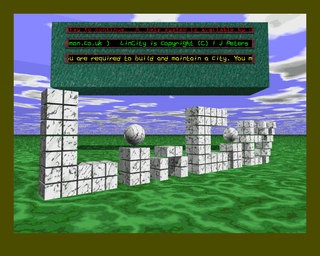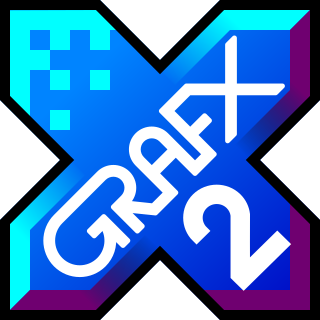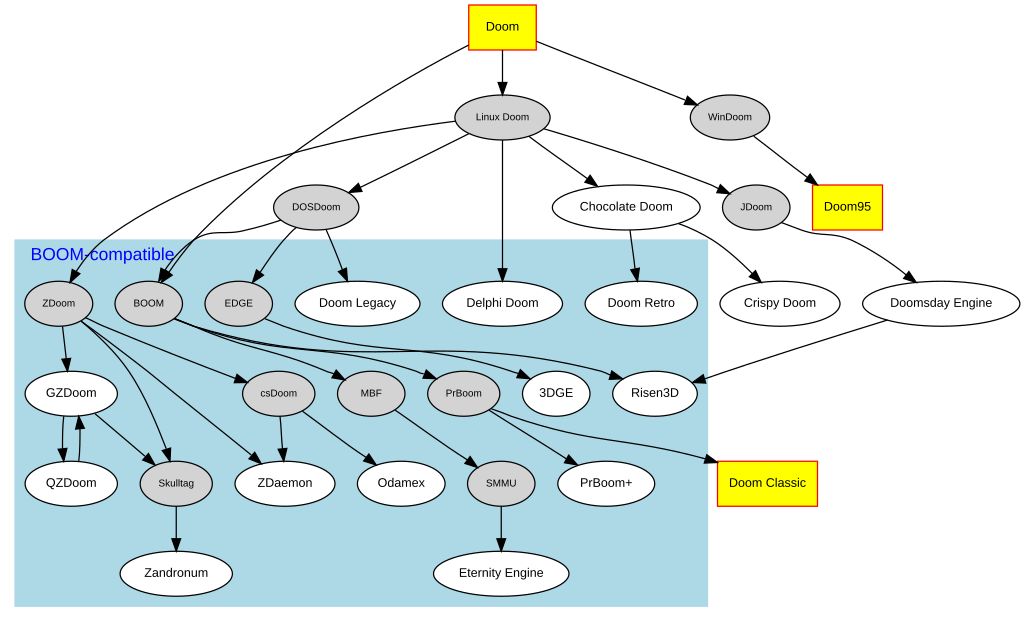
Heretic is a dark fantasy first-person shooter video game released in 1994. It was developed by Raven Software and published by id Software through GT Interactive. The game was released on Steam on August 3, 2007.

Hexen: Beyond Heretic is a dark fantasy first-person shooter video game developed by Raven Software and published by id Software through GT Interactive Software on October 30, 1995. It is the sequel to 1994's Heretic, and the second game in Raven Software's "Serpent Riders" trilogy, which culminated with Hexen II. The title comes from the German noun Hexen, which means "witches", and/or the verb hexen, which means "to cast a spell". Game producer John Romero stated that a third, unreleased game in this series was to be called Hecatomb.

Hexen II is a dark fantasy first-person shooter (FPS) video game developed by Raven Software from 1996 to 1997, then published by id Software and distributed by Activision. It is the third game in the Hexen/Heretic series, and the last in the Serpent Riders trilogy. It was later made available on Steam on August 3, 2007. Using a modified Quake engine, it features single-player and multiplayer game modes, as well as four character classes to choose from, each with different abilities. These include the "offensive" Paladin, the "defensive" Crusader, the spell-casting Necromancer, and the stealthy Assassin.

id Software LLC is an American video game developer based in Richardson, Texas. The company was founded on February 1, 1991, by four members of the computer company Softdisk, programmers John Carmack and John Romero, game designer Tom Hall, and artist Adrian Carmack. Business manager Jay Wilbur was also involved. id Software made important technological developments in video game technologies for the PC, including work done for the Wolfenstein, Doom, and Quake franchises. id's work was particularly important in 3D computer graphics technology and in game engines that are used throughout the video game industry. The company was involved in the creation of the first-person shooter (FPS) genre. Wolfenstein 3D is often considered to be the first true FPS, Doom is a game that popularized the genre and PC gaming in general, and Quake was id's first true 3D FPS.
In computing, cross-platform software is computer software that is implemented on multiple computing platforms. Cross-platform software may be divided into two types; one requires individual building or compilation for each platform that it supports, and the other one can be directly run on any platform without special preparation, e.g., software written in an interpreted language or pre-compiled portable bytecode for which the interpreters or run-time packages are common or standard components of all platforms.
id Tech 1, also known as the Doom engine, is the game engine that powers the id Software games Doom and Doom II: Hell on Earth. It is also used in Heretic, Hexen: Beyond Heretic, Strife: Quest for the Sigil, Hacx: Twitch 'n Kill, Freedoom, and other games produced by licensees. It was created by John Carmack, with auxiliary functions written by Mike Abrash, John Romero, Dave Taylor, and Paul Radek. Originally developed on NeXT computers, it was ported to DOS for Doom's initial release and was later ported to several game consoles and operating systems.
A source port is a software project based on the source code of a game engine that allows the game to be played on operating systems or computing platforms with which the game was not originally compatible.

Build is a first-person shooter engine created by Ken Silverman, author of Ken's Labyrinth, for 3D Realms. Like the Doom engine, the Build engine represents its world on a two-dimensional grid using closed 2D shapes called sectors, and uses simple flat objects called sprites to populate the world geometry with objects.

Hyperion Entertainment CVBA is a Belgian software company which in its early years focused in porting Windows games to Amiga OS, Linux and Mac OS. In 2001, they accepted a contract by Amiga Incorporated to develop AmigaOS 4 and mainly discontinued their porting business to pursue this development. AmigaOS 4 runs on the AmigaOne systems, Commodore Amiga systems with a Phase5 PowerUP accelerator board, Pegasos II systems and Sam440/Sam460 systems.
In the jargon of computer programming, a source upgrade is a modification of a computer program's source code, which adds new features and options to it, improves performance and stability, or fixes bugs and errors from the previous version. There are two popular types of source upgrades, which are listed here:
Doom WAD is the default format of package files for the video game Doom and its sequel Doom II: Hell on Earth, that contain sprites, levels, and game data. WAD stands for Where's All the Data? Immediately after its release in 1993, Doom attracted a sizeable following of players who created their own mods for WAD files—packages containing new levels or graphics—and played a vital part in spawning the mod-making culture which is now commonplace for first-person shooter games. Thousands of WADs have been created for Doom, ranging from single custom levels to full original games; most of these can be freely downloaded over the Internet. Several WADs have also been released commercially, and for some people the WAD-making hobby became a gateway to a professional career as a level designer.

Abuse is a run and gun video game developed by Crack dot Com and published by Electronic Arts in North America and Origin Systems in Europe. It was released on February 29, 1996 for MS-DOS. A Mac OS port of the game was published by Bungie and released on March 5, 1997. The game's source code, along with some of the shareware content, has been in the public domain since the late 1990s and has been ported to Linux and many other platforms.

Lincity is a free and open-source software construction and management simulation game, which puts the player in control of managing a city's socio-economy, similar in concept to SimCity. The player can develop a city by buying appropriate buildings, services and infrastructure. Its name is both a Linux reference and a play on the title of the original city-building game, SimCity, and it was released under the GNU General Public License v2.

FooBillard is a free and open-source, OpenGL-based sports simulation video game.
Mac gaming refers to the use of video games on Macintosh personal computers. In the 1990s, Apple computers did not attract the same level of video game development as Microsoft Windows computers due to the high popularity of Microsoft Windows and, for 3D gaming, Microsoft's DirectX technology. In recent years, the introduction of Mac OS X and support for Intel processors has eased porting of many games, including 3D games through use of OpenGL and more recently Apple's own Metal API. Virtualization technology and Boot Camp also permit the use of Windows and its games on Macintosh computers. Today, a growing number of popular games run natively on macOS, though as of early 2019, a majority still require the use of Microsoft Windows.
Linux gaming refers to playing video games on the Linux operating system.

id Tech is a series of separate game engines designed and developed by id Software. Prior to the presentation of the id Tech 5-based game Rage in 2011, the engines lacked official designation and as such were simply referred to as the Doom and Quake engines, from the name of the main game series the engines had been developed for. "id Tech" numbers 1, 2, 3, and 4 have been released as free software under the GNU General Public License, along with the source code to Wolfenstein 3D, Doom, and Quake. id Tech 7 is currently the latest utilized engine.

GrafX2 is a bitmap graphics editor inspired by the Amiga programs Deluxe Paint and Brilliance. It is free software and distributed under GNU General Public License.

Godot is a 2D and 3D, cross-platform, free and open-source game engine released under the MIT license. It was initially developed by Argentinians Juan Linietsky and Ariel Manzur for several companies in Latin America prior to its public release. The development environment runs on multiple operating systems including Linux, BSDs, macOS, and Microsoft Windows. Godot can create games targeting PC, mobile, and web platforms.











